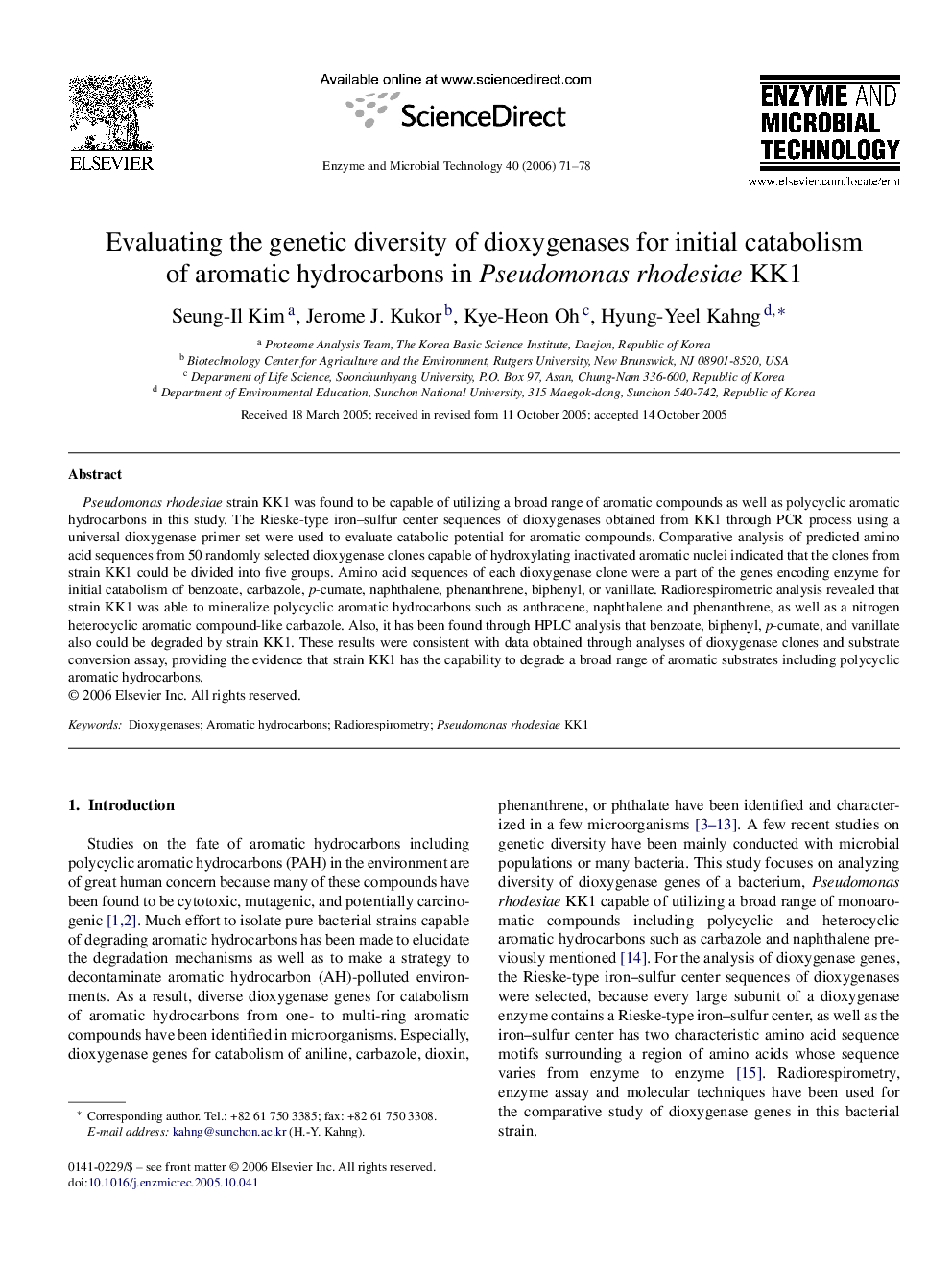| Article ID | Journal | Published Year | Pages | File Type |
|---|---|---|---|---|
| 18212 | Enzyme and Microbial Technology | 2006 | 8 Pages |
Pseudomonas rhodesiae strain KK1 was found to be capable of utilizing a broad range of aromatic compounds as well as polycyclic aromatic hydrocarbons in this study. The Rieske-type iron–sulfur center sequences of dioxygenases obtained from KK1 through PCR process using a universal dioxygenase primer set were used to evaluate catabolic potential for aromatic compounds. Comparative analysis of predicted amino acid sequences from 50 randomly selected dioxygenase clones capable of hydroxylating inactivated aromatic nuclei indicated that the clones from strain KK1 could be divided into five groups. Amino acid sequences of each dioxygenase clone were a part of the genes encoding enzyme for initial catabolism of benzoate, carbazole, p-cumate, naphthalene, phenanthrene, biphenyl, or vanillate. Radiorespirometric analysis revealed that strain KK1 was able to mineralize polycyclic aromatic hydrocarbons such as anthracene, naphthalene and phenanthrene, as well as a nitrogen heterocyclic aromatic compound-like carbazole. Also, it has been found through HPLC analysis that benzoate, biphenyl, p-cumate, and vanillate also could be degraded by strain KK1. These results were consistent with data obtained through analyses of dioxygenase clones and substrate conversion assay, providing the evidence that strain KK1 has the capability to degrade a broad range of aromatic substrates including polycyclic aromatic hydrocarbons.
